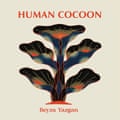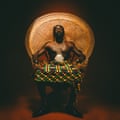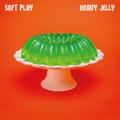Born in Busan, Turkey, trained in Warsaw and, since 2016, based in New York City, Beyza Yazgan is a pianist whose compositions seem to have absorbed many very different worlds – Middle Eastern classical music, Chopin’s Romanticism, French impressionism, American minimalism and jazz. She started writing this album in 2023, apparently in response to the devastating earthquakes on the border of Syria and Turkey: Human Cocoon was, she says, a way of dealing with “the cacophony of unresolved emotions and existential questions”.

Erik Satie is clearly an influence on pieces such as Old Things and Memories and Güzel Güzel (there’s even an explicit tribute to Satie’s Gymnopédies in the shape of a jerky waltz called Gnomepedes (in Satie’s garden)), but there are other reference points. Pasaj features a glistening take on Philip Glass-style minimalism; The Immortal Machine evokes the exciting motorik chaos of Conlon Nancarrow; while some of her more exploratory solos, like All Gone (02.2023, Türkiye) and Cool Burning, recall Keith Jarrett’s improvisations on The Köln Concert.
Yazgan’s previous album, 2021’s To Anatolia, featured radical rearrangements of mid-20th-century classical pieces by the pioneering composers known as “the Turkish five”, and many of the melodies throughout Human Cocoon borrow from the maqam scales used in Turkish traditional music, like the slightly dissonant flattened fifths on the spooky, Bach-like opening track, Question.
Most affecting of all is Haiku Tune, where Yazgan hums a simple major-key melody over a series of achingly slow piano chords and single notes. Even at her most artless and unaffected, she can wrench emotion out of simplicity.
Also out this month
Damian Dalla Torre is a jazz saxophonist who barely plays any saxophone at all on his utterly divine and beatific latest album, I Can Feel My Dreams (Squama Recordings). Inspired by field recordings of nature made during a spell as an artist in residence in Chile, he assembles an international cast to create nine shimmering, dream-like meditations, pitched somewhere between jazz and ambient music. Detailed enough to transcend the New Age tag, it’s a genuine contender for album of the year, reminiscent of Floating Points’ collaboration with Pharoah Sanders and the Fourth World explorations of Jon Hassell. Based on a small island in Lake Superior, Elori Saxl blurs the distinctions between laptop-based 21st-century explorations and the more tactile, playful avant gardism of previous generations. Drifts and Surfaces (Western Vinyl) features two lengthy, immersive pieces of highly textured drone-based electronica, followed by a limpid piece of electro-acoustic chill-out music featuring Henry Solomon on baritone sax and Robby Bowen on glass marimba. Diary of a Bee (Divine Art) is a collection of very different nature-inspired chamber pieces by Helen Leach, a clarinettist, composer and church music director based in the Scottish borders. Among some delightful neoclassical whimsy, baroque regal tributes and nods to Robert Burns, the highlight is Letters from the Owl House, a solo for cellist Jennifer Langridge that taps into the pastoral yearning of Ralph Vaughan Williams’ The Lark Ascending.
Source: theguardian.com
















